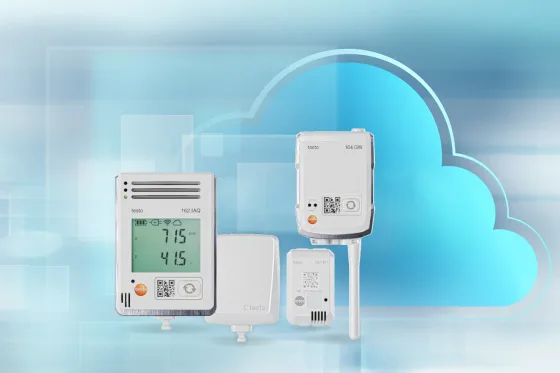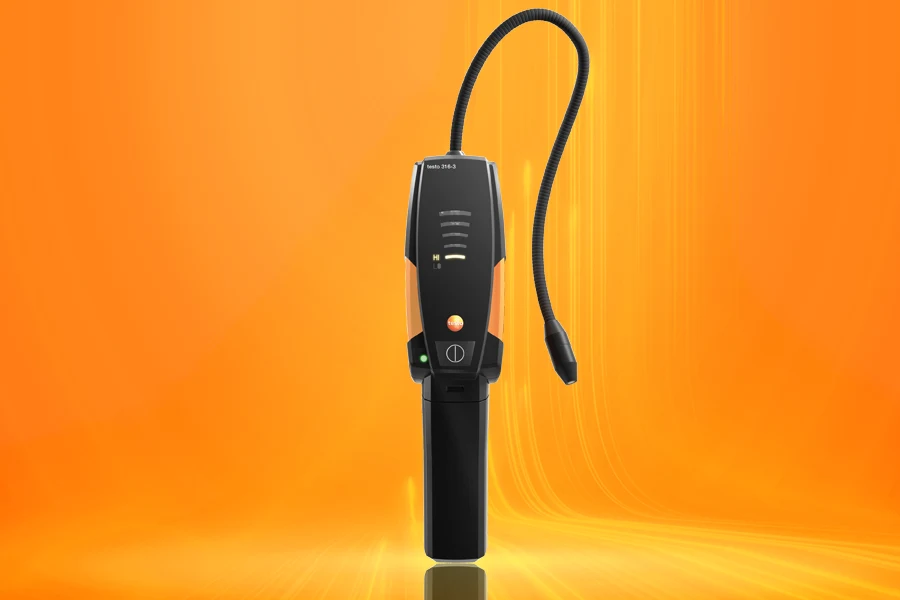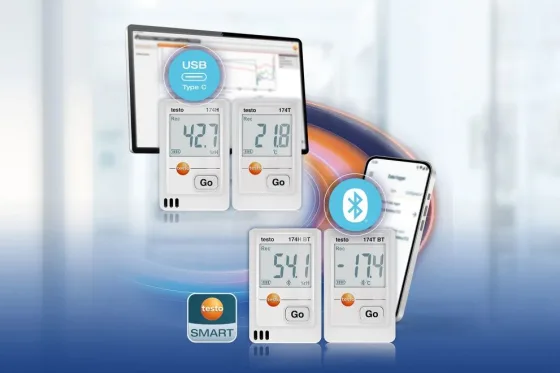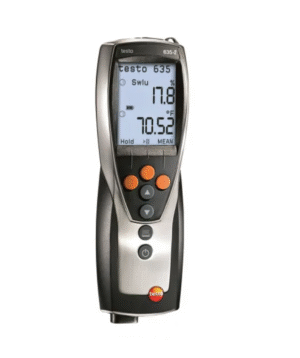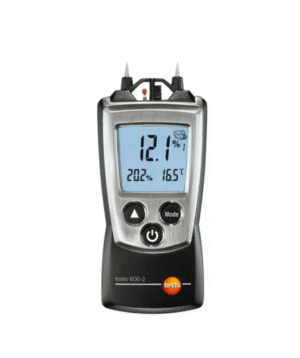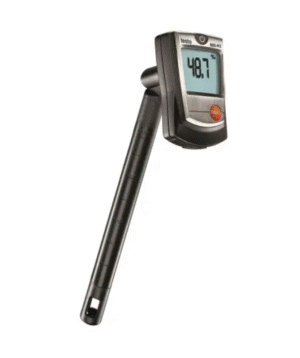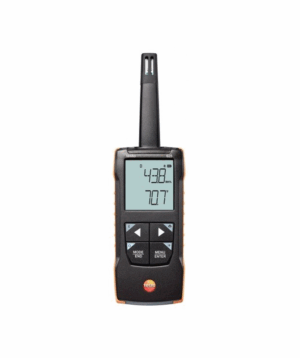testo 610, air humidity and temperature
<strong>Features:</strong>
* ±2.5 % RH accuracy with calibration protocol
<ul>
<li>Long-term stable Testo humidity sensor</li>
<li>Includes dew point and wet bulb temperature calculation</li>
</ul>
<strong>Application:</strong>
Spot measurements for quick climate control in rooms, e.g., in offices or production facilities.
Related products
Related Products
-
testo 635-2 humidity/temperature measuring instrument
with memory, PC software, and USB cable for data transfer, including battery and calibration protocol
The instrument is designed for measuring air humidity, material equilibrium moisture, and pressure dew point in compressed air systems. Humidity characteristics can be stored in the device’s memory, analyzed, and then displayed in graphical or tabular form. The device’s display can show data from up to three radio probes for humidity or temperature, transmitted wirelessly via the radio option (*please check the availability of this option in your country).
Selectable user profiles – for example, assigning specific function keys to particular tasks – and a user-friendly menu make the instrument intuitive to operate. Material humidity can be displayed instantly when a special probe is connected.
Characteristics for different materials can be pre-set in the ComSoft software and transferred to the instrument.When analyzing wall and ceiling humidity, the instrument immediately displays the dew point difference between air temperature and wall surface temperature.
For measuring the pressure dew point in compressed air systems, high-precision probes are available (up to -60 °Ctd).
The Testo humidity sensor is recognized worldwide for its outstanding accuracy, long-term stability, temperature resistance, and robustness.- Internal memory for 10,000 measurement datasets
- PC software for analysis, archiving, and documentation of measurement data
- Measurement of air humidity, material equilibrium humidity, and pressure dew point in compressed air systems
- Wireless radio probes for temperature and humidity
- Protection class IP54
-
testo 606-2, material moisture, temperature and air humidity
Product Advantages:
* Accurate measurement of wood moisture using stored characteristics for beech, spruce, larch, oak, pine, and maple
* Additional characteristics for cement floors, concrete, gypsum, anhydrite floors, cement mortar, lime mortar, and brick
* HOLD function for convenient reading of measurements
* Display backlight
* Self-test function
* Protective cap for secure storage
* Includes wrist strap and belt pouch
**Exclusive to testo 606-2*** Measurement of ambient air temperature and humidity
* Air humidity measurement using long-term Testo humidity sensor
* Includes calculation of dew point and wet-bulb temperature
-
testo 605–H1 – thermohygrometer with clamp, incl. battery.
Humidity measurement – simple and convenient
The Testo 605-H1 is a compact and easy-to-use thermo-hygrometer. It measures the relative humidity and air temperature, and additionally calculates the dew point temperature. The Testo 605 is ideal for monitoring air humidity in ducts.- Air humidity, air temperature, and dew point
- Stable Testo humidity sensor
- Perfect for measuring humidity in ducts
-
testo 625, humidity/temperature measuring instrument
With app connection and audible alarm, including nylon transport bag, batteries, and calibration protocol
Simple, fast, and precise measurement of air temperature and relative humidity.
Calculation of dew point and wet bulb temperature.
Quick setup in the app, graphical history, second screen, and storage of measurement data in the testo Smart App.
Audible alarm when limit values are exceeded.
With the compact testo 625 device, you can easily, quickly, and accurately measure air temperature and relative humidity to assess indoor air quality or ensure optimal conditions in storage facilities.
The testo Smart App provides useful functions such as configuration, display (also as a second screen), as well as storage and documentation of measured values directly in the app.

